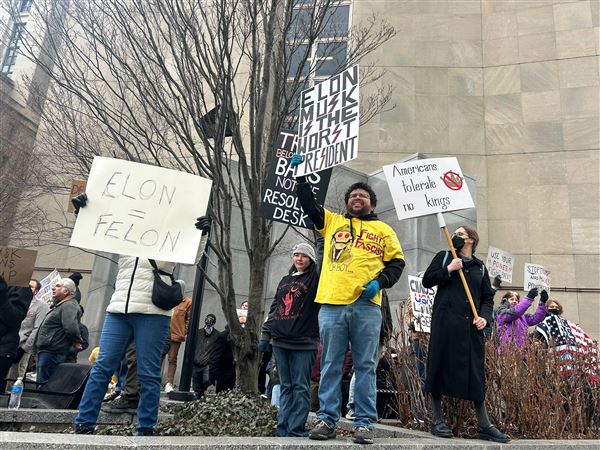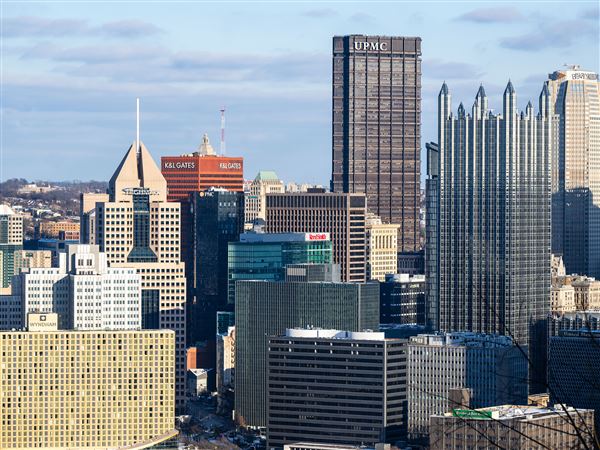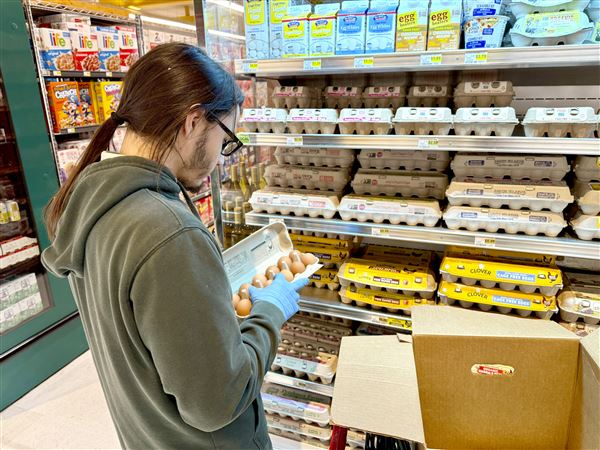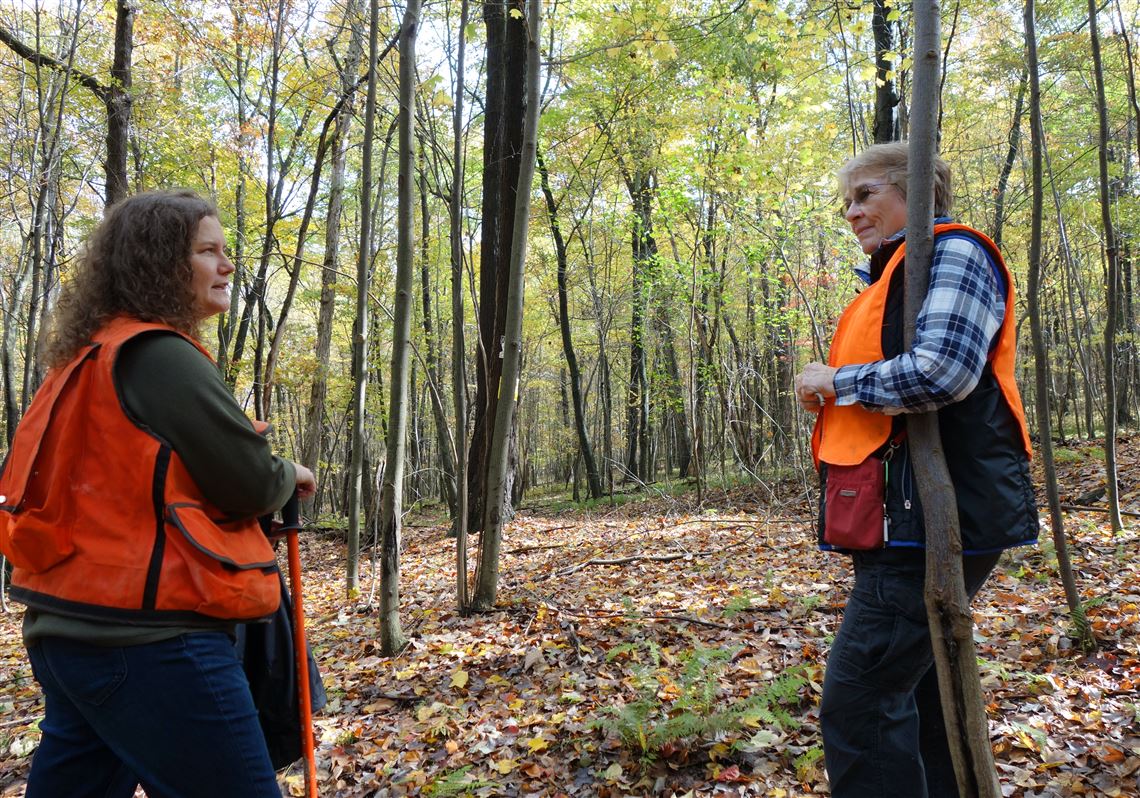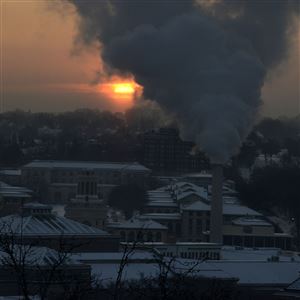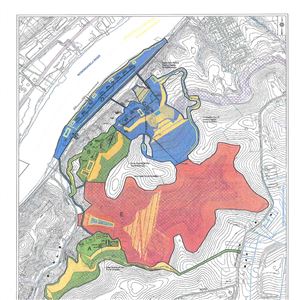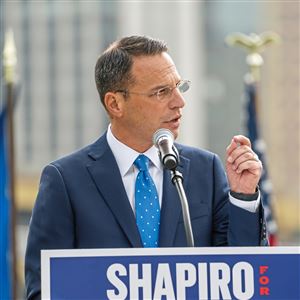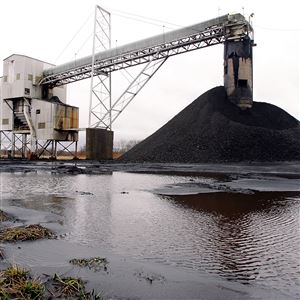SHAMOKIN TOWNSHIP, Pa. — For many years, Louise Hartman’s deep fondness for her family’s 154-acre forest in Northumberland County was not matched by knowledge about how to help it thrive.
The 70-year-old retired art historian remembers her father showing her and her two sisters how to pull the bark from a birch tree to chew on when they were young girls and how to find their way back down through the woods to their farm in the valley below.
But by the time they inherited the property as adults, the sisters’ expertise was elsewhere.
“We had no clue. An art historian, elementary educator and a pharmacist. What did we know about forests?” she said.
The program that gave them an encyclopedia of their woods, guidance on how to improve it and money to get it done has a different primary aim: combating climate change.
The Hartman sisters were among the first people to enroll in the Family Forest Carbon Program, an initiative of the American Forest Foundation and the Nature Conservancy that began as a pilot in 29 Pennsylvania counties in 2020. Now, it is expanding to every county in Pennsylvania, all of West Virginia and five counties in western Maryland.
It is the first expansion on the way to what the nonprofits hope will be a nationwide program. Their goal: to get 20% of family-owned forest acres across the country to commit to forest health improvements that will pull at least 50 million tons of carbon dioxide a year from the air and lock it into trees. That captured carbon will be sold as credits to corporations that want to zero-out their ledger of greenhouse gas emissions.
Forest carbon markets have long been open mainly to owners of large forests growing many thousands of acres of trees. Typical carbon measurement and verification strategies are too expensive and complex to pursue on a smaller scale and demand commitments of 100 years.
That leaves out a huge swath of forests owned by families, which are usually smaller than 1,000 acres each but collectively represent the largest forest ownership class in the U.S. In Pennsylvania, family forest owners hold 51% of the forestland, according to the program.
The Family Forest Carbon Program is open to forest owners with as little as 30 acres and as many as 2,400 acres. It can do this because, instead of tree-by-tree accounting, it calculates the carbon benefits of sustainable forestry practices that many small landowners agree to adopt.
So far, the program asks landowners to commit to one of two options: “growing mature forests” — which puts restrictions on timber harvests for 20 years — or “enhancing future forests” — a 10-year contract to remove invasive and unwanted plants so that young, desirable trees can thrive.
The mature forests practice pays between $100-$230 per acre, depending on how much timber is on the land when it’s enrolled, while the future forests practice pays between $50-$280 per acre, depending on how choked the forest is with competing vegetation that needs to be treated.
How it works
The American Forest Foundation and the Nature Conservancy have come up with a new way to check that the program is working. For every plot that’s enrolled, the program identifies 10 plots of similar character that aren’t enrolled, drawing from the U.S. Forest Service’s extensive monitoring network of more than 350,000 stands of trees on public and private land.
The bet is that enrolled forests will store more carbon than those outside of the program that contain similar trees of similar age in similar settings with like-minded owners.
If they don’t — “No carbon benefit will be generated by those landowners within our program. No credits will be sold. No companies will be able to make claims,” the American Forest Foundation’s Christine Cadigan and Nathan Truitt wrote in a blog post in May. “This approach helps push the program to design forest practices that produce true, additional carbon.”
In an interview, Ms. Cadigan, senior director of the Family Forest Carbon Program, said that risk falls on the nonprofits running the program, not the enrolled landowners. “The landowners get a guaranteed fixed payment,” she said.
As for the program’s operators, “We feel very confident in our methodology and in the practices that we’ve identified,” she said.
The first verification round will be done at the end of 2022 and then credits will be sold.
The program has already signed long-term agreements with Amazon and REI Co-op, plus a third so-far unnamed Fortune 500 company, to buy carbon credits once they are verified. Essentially, all of the carbon credits the project is expected to generate through 2025, from properties currently in the program and those yet to be enrolled, have already been committed to those companies, Ms. Cadigan said.
The methodology is meant to counter critiques that have undermined confidence in forest carbon offsets, including research that even credits verified by outside auditors frequently inflate their carbon benefits or are diminished because they inadvertently push timbering onto unprotected forests.
Critics argue that by over-counting the amount of carbon cheaply stored away in trees, companies can postpone taking more difficult and expensive — but necessary — steps to limit their use of fossil fuels directly and across the life of their products and services.
Ms. Cadigan said the program is committed to having a meaningful climate impact and making changes, if necessary, to ensure its carbon benefits are real.
At the same time, the international scientific consensus is clear that a profound and rapid reduction in greenhouse gas emissions is necessary to avoid catastrophic climate change.
“We simply cannot afford to not leverage everything at our disposal — which includes natural climate solutions, and absolutely includes forests, because they're some of the most cost-effective solutions,” she said.
‘The forests here are very unique’
According to Pennsylvania’s recent Climate Action Plan, the state’s forests soaked up about 11% of the state’s total greenhouse gas emissions in 2017, the most recent date available.
But trees can play a bigger part, the plan said: By extending the time between timber harvests and reforesting suitable open spaces and abandoned mine lands, Pennsylvania could store an additional 3 million metric tons of carbon in its woods in 2050.
The Family Forest Carbon Program has competition in its efforts to entice small landowners to lock in more carbon.
A tech startup called Natural Capital Exchange (NCX), for example, offers to pay forest owners not to cut down their trees for one year, and there is no minimum acreage. The payments vary depending on landowners’ bids and the current price of carbon. Companies buying NCX’s offsets include Royal Dutch Shell and Microsoft.
“Pennsylvania and the Appalachian region is of special interest to carbon offset project developers because the forests here are very unique,” said Melissa Kreye, an assistant professor of forest resource management at Penn State.
Pennsylvania’s forests are defined by high-density stands and hardwood species. The trees live for a long time, which means they can hold carbon for a long time, and they are often on private land.
“All these things together means the potential for carbon storage is very high per acre compared to some other states,” she said.
It’s clear that Pennsylvania landowners want to know more about the opportunity. More than 1,200 people have participated in Penn State Extension’s introductory forest carbon markets webinar series over the last two years, Ms. Kreye said.
In the first year of the Family Forest Carbon Program, through January 2021, 61 landowners enrolled nearly 9,000 acres with contracts that will pay them collectively more than $2.5 million over the next two decades.
But the program’s reach was actually broader, according to its pilot report: 169 landowners in the state, with more than 26,000 acres, had a visit with a forester to assess whether they were a good fit for the program and to get advice on management. Nearly 2,000 landowners inquired if their properties were eligible.
One feature of the program that stood out during the pilot phase was that forest owners loved interacting with a forester and crafting a management plan, American Forest Foundation spokeswoman Elizabeth Greener said.
The two biggest barriers for families to begin improving the health and habitat of their forests are the high costs of management practices and difficulty finding technical advice on how to go about it, she said.
During the pilot, 65% of the enrolled properties did not previously have a forest management plan.
“Markets are great, because it solves that financial piece for landowners to be able to cover the costs. But really to get landowners active, we have found that it has to be coupled with technical assistance. It just can't be the funds alone,” she said.
‘a 100-year decision’
The Hartman sisters’ forest was once a storied chestnut farm, run by Coleman K. Sober, who was referred to by one historian as the nation’s “greatest chestnut entrepreneur.”
In 1903, more than 75,000 specially grafted chestnut trees covered 300 acres in the valley. Mr. Sober was known to climb to the 75-foot high cupola in his titanic barn — fashioned from reddish-hued chestnut beams and planks — so he could watch the workers harvesting chestnuts below.
By 1913, the chestnut blight had laid waste to the orchard and the business.
The forest that grew up after that ruin is the Hartman sisters’ project today.
During a walk last week up the hillside woods, Louise Hartman led Sarah Hall-Bagdonas, a forester with the Family Forest Carbon Program, through acres where the forest had mostly been left alone to grow. Further along, the forest became dense with spindly trees and twiggy undergrowth. It was an area where, two decades ago, a timber company had paid the family well to harvest the highest-quality trees, an unsustainable practice.
The dominant remaining trees were birch, a variety that grows fast but does not live long and carries little value for wood products or wildlife, Ms. Hall-Bagdonas said.
“When you're cutting out all the big ones, you're cutting out all the good genetics, the ones that thrive, and you're leaving the suppressed trees,” she said.
“You can make a lot of money one time, but it devalues it for 100 years.”
“I didn't realize that was a 100-year decision,” Ms. Hartman said. “But now I do.”
Soon, the Hartmans are planning a targeted harvest to take out some undesirable trees and clear the way for hardwoods to take root. Ms. Hartman coos over the memory of a well-managed forest she once toured, where the trees were straight and spaced apart and the ground was spongy from the water absorbed in the rich soil. She marvels over what her future forest might be like the way some people covet a car or a kitchen.
“I remember when we were thinking of doing this I said, this is something we can do for climate change,” Ms. Hartman said. “It may not be the be all and end all, but it helps.”
Laura Legere: llegere@post-gazette.com.
First Published: November 1, 2021, 10:00 a.m.
Updated: November 1, 2021, 10:03 a.m.
